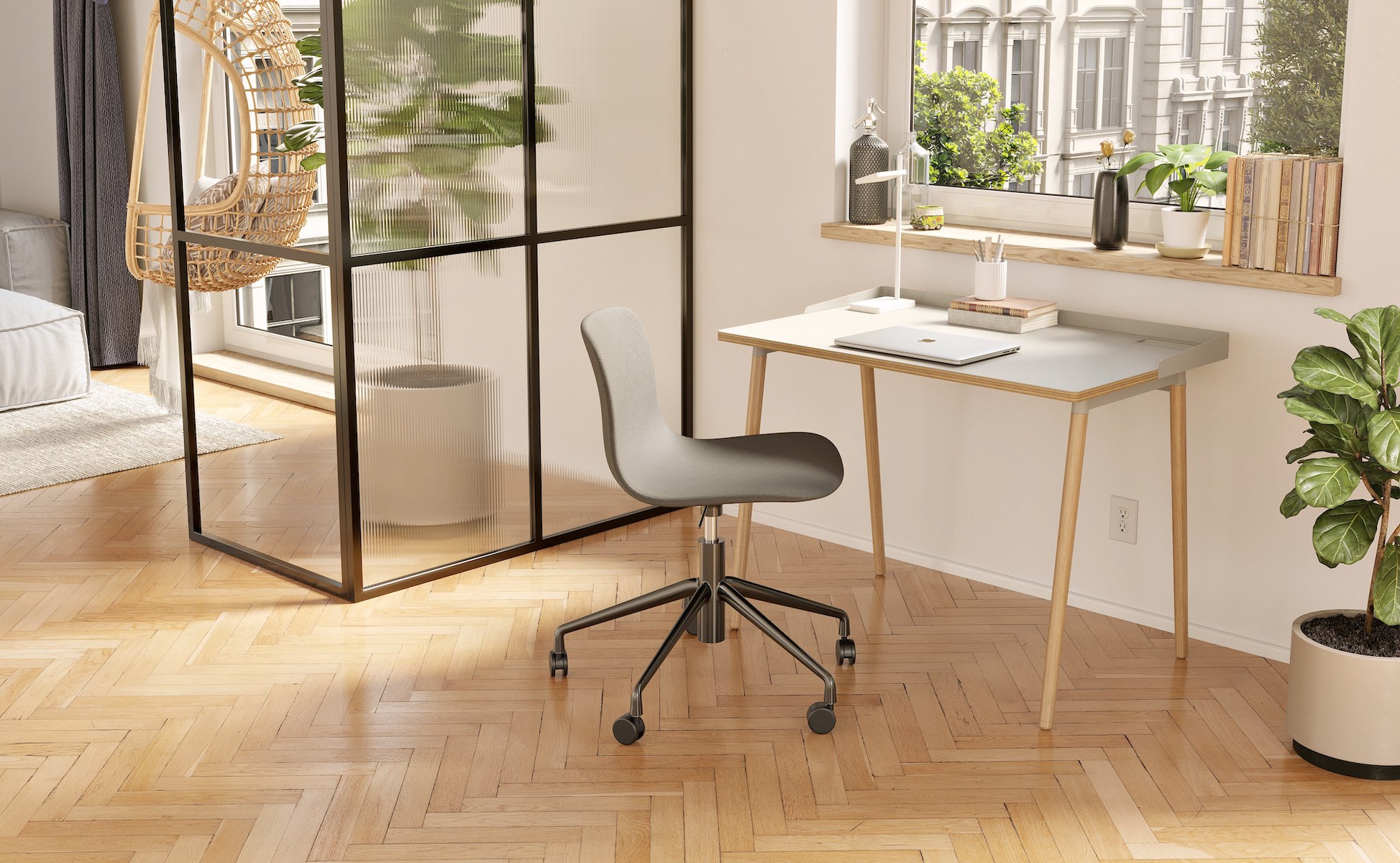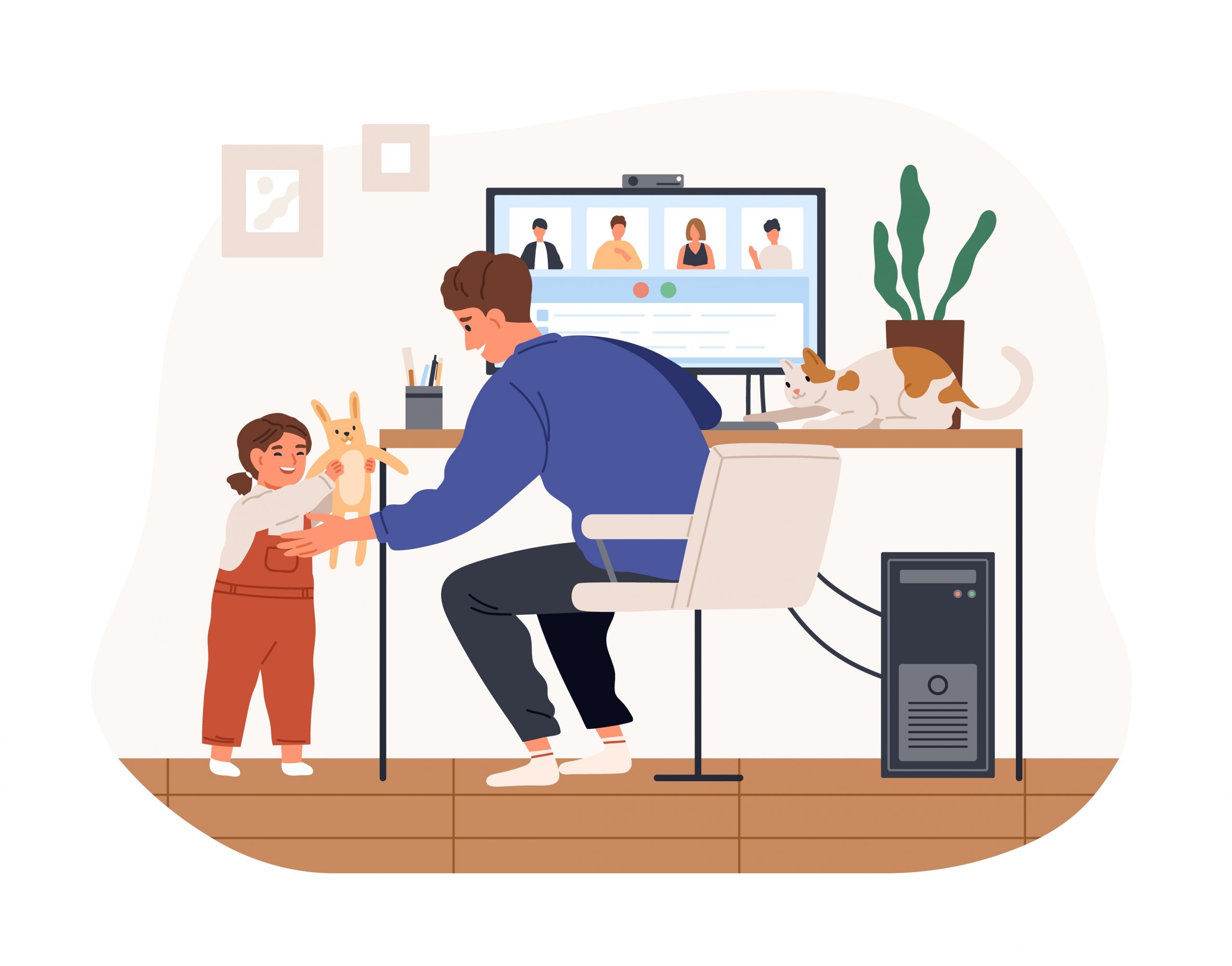Working from home won’t stop when corporations unlock their doors again. It’s time to provide employees with the professional tools they need there.
If there’s one thing that the great work-from-home experiment of 2020 has aptly demonstrated, it’s this: the workplace is no longer defined by the four walls of an office. While the concepts of WFH and other forms of remote work options aren’t new, the pandemic has forced a rapid embrace of them at scale—to the point that a recent Stanford University report estimates that 42 percent of the U.S. labor force now works from home full-time. That’s already nearly half the workforce, and with 33 percent not working and the remaining 26 percent mostly made up of essential workers, the U.S. now has almost twice as many employees working from home rather than on-site. That’s a massive, major, paradigm-shifting sea change. The U.S. is, essentially, a work-from-home economy right now, and as so many people have experienced this transition already, the idea of the traditional 9-5 as the sole status quo suddenly seems passé. That’s not to say that the office itself won’t be important (it is, and it will be) but how and when we use it will continue to evolve.
Even when immunity levels rise and office doors crack open again, it’s likely that a flexible model of working becomes the new norm. Which might mean that employees choose where they’ll work daily, between a headquarters, their home, a satellite office or a co-working space. But here’s the rub: Among these different environments, the space where most workers have been toiling away for the last nine months—their home—is too-often inadequately set-up to truly promote productive work.
In the earliest days of the coronavirus spread, many workers slapped together a “home office” in a bedroom corner or at their dining room table. Some forward-thinking companies stepped up quickly to offer employees stipends to improve their WFH set-ups; now, according to a recent Aon survey of around 1,400 U.S.-based companies, nearly 1 in 5 are helping to pay for their workers’ home-office equipment. That’s a smart move, as cities gear up for a resurgence in COVID-19 cases and working from home extends into another season. Clearly, it’s time to get serious about the fact that for many people, the home will remain their primary office for the foreseeable future. So how can a WFH experience be made better? To answer that question, ROOM is launching a Work From Home Desk aimed at providing workers with a more professional set-up that accounts for all the ways we work now.
ROOM’s WFH Desk includes a compact or height-adjustable ergonomic desk, an accessory tray and clever add-ons like a minimalist LED task lamp that includes embedded wireless charging and built-in electrical featuring two outlets, two USB-A ports and one USB-C port. The desk itself is deliberately whittled down to a small 27.4”H x 39.7” x 26.1” size, suitable for city apartments where real estate is limited, in a selection of surface and leg finish colors chosen to complement a wide variety of interior styles. A subtle raised lip on the backside of the desk even helps contain objects that might shift—a particularly useful feature on a moving ergonomic desk. “We tried to make the desk the simplest we could, yet be extremely functional,” says Alejandra Albarrán, ROOM’s Director of Design & Innovation. “We didn’t want to put in all the bells and whistles; they’re not needed. We just thought deeply about the details that could make the experience better.”
The lamp is definitely one of those details. In addition to its wireless charging capabilities, it’s dimmable, with an 180-degree tilting head that pivots to provide perfect lighting for video conferencing. “It gives you great lighting across the desk, and it’s also basically a beauty light that can make it seem like you slept really well,” says Albarrán with a laugh. The accessory tray doubles as a stand to keep devices like phones or iPads upright. And the desk’s thoughtfully chosen materials—wood, metal, and a scratch-resistant linoleum top—are easy to clean, environmentally friendly and recyclable. “The linoleum surface feels really good to work on it, even a bit cushioned,” she notes.
When considering an office chair to complete the desk offering, ROOM looked to HAY, a Copenhagen based design collective, hand-picking its stylish “About A Chair 51.” It’s an upholstered, curved shell task chair that reflects and compliments the WFH desks in it’s clean style, functionality and form.
The desk is virtually a condensed, professional, quality office-in-a-box. “We wanted to leverage our knowledge of how to create great work environments not only in the office,” says Morten Meisner-Jensen, ROOM’s co-founder. “This is our way of extending the physical workplace that’s affordable, fast to install and has all the professional ergonomics and video conferencing capabilities needed today.” The desk is ideal for someone setting up a home office for the first time, or improving a current situation. And the research is already clear that having a home workspace that reflects your dedicated office helps improve your productivity when working from home—while poorly established spaces or desks that need to morph regularly back to, say, a dining table, create a series of uphill battles for employees to simply meet their normal benchmarks. Physical discomfort and inferior ergonomics compound over time, too, and can even lead to repetitive stress injuries.
Meisner-Jensen’s hope is that business leaders will think more holistically about how they invest in their work environments in the future. “I think there’s going to be a whole ecosystem of choices that create your work environment: A home office will play a role, co-working spaces will play a role and so will the office, all blocks we’ll use to piece together this puzzle of the hybrid workspace,” he says. “There’s negative things to only working at an office, and there’s negative things to only working at home. Why wouldn’t we choose the best of both worlds?”
ROOM’s co-founder sees this period of time less as a holding pattern before we return to our pre-pandemic normalcy and more as an opportunity for companies to take a long, hard look at the things that weren’t working at their traditional offices—and change them for the better. “Let’s make the workspace a more dynamic, engaging place to come back to,” Meisner-Jensen urges. “Let’s think not only about the workplace but the workspace, in a more holistic way than within the four walls of the office. Companies with the ability to think differently about their workers’ ecosystem of environments, those will be the winners. And ROOM wants to be part of that evolution.”


